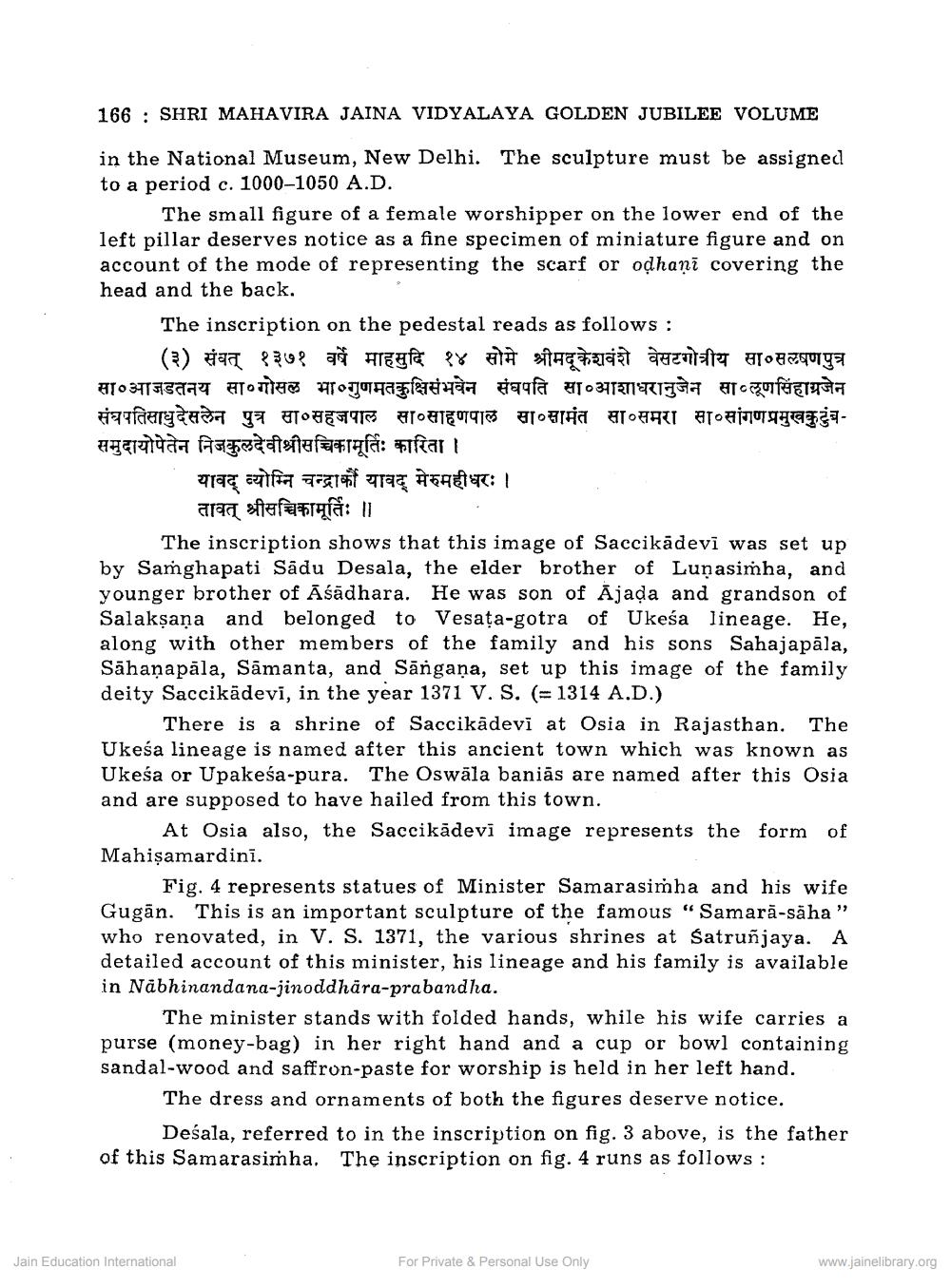Book Title: Some Inscriptions and Images on Mount Satrunjaya Author(s): Ambalal P Shah Publisher: Z_Mahavir_Jain_Vidyalay_Suvarna_Mahotsav_Granth_Part_1_012002.pdf and Mahavir_Jain_Vidyalay_Suvarna_ View full book textPage 5
________________ 166 : SHRI MAHAVIRA JAINA VIDYALAYA GOLDEN JUBILEE VOLUME in the National Museum, New Delhi. The sculpture must be assigned to a period c. 1000-1050 A.D. The small figure of a female worshipper on the lower end of the left pillar deserves notice as a fine specimen of miniature figure and on account of the mode of representing the scarf or odhani covering the head and the back. The inscription on the pedestal reads as follows: (३) संवत् १३७१ वर्षे माहसुदि १४ सोमे श्रीमदूकेशवंशे वेसटगोत्रीय सा०सलषणपुत्र सा०आजडतनय सागोसल भा०गुणमतकुक्षिसंभवेन संघपति सा०आशाधरानुजेन साब्लूणसिंहाग्रजेन संघपतिसाधुदेसलेन पुत्र सा०सहजपाल सा०साहणपाल सा०सामंत सा०समरा सा०सांगणप्रमुखकुटुंबसमुदायोपेतेन निजकुलदेवीश्रीसच्चिकामूर्तिः कारिता । यावद् व्योम्नि चन्द्राऊ यावद् मेरुमहीधरः । तावत् श्रीसच्चिकामूर्तिः ॥ The inscription shows that this image of Saccikādevī was set up by Saṁghapati Sādu Desala, the elder brother of Lunasimha, and younger brother of Aśādhara. He was son of Ajada and grandson of Salaksana and belonged to Vesata-gotra of Ukeśa lineage. He, along with other members of the family and his sons Sahajapāla, Sāhanapăla, Samanta, and Sāngana, set up this image of the family deity Saccikädevi, in the year 1371 V. S. (= 1314 A.D.) There is a shrine of Saccikādevi at Osia in Rajasthan. The Ukeśa lineage is named after this ancient town which was known as Ukeśa or Upakeśa-pura. The Oswāla baniās are named after this Osia and are supposed to have hailed from this town. At Osia also, the Saccikādevī image represents the form of Mahişamardinī. Fig. 4 represents statues of Minister Samarasimha and his wife Gugān. This is an important sculpture of the famous “Samará-säha" who renovated, in V. S. 1371, the various shrines at Satruñjaya. A detailed account of this minister, his lineage and his family is available in Nābhinandana-jinoddhāra-prabandha. The minister stands with folded hands, while his wife carries a purse (money-bag) in her right hand and a cup or bowl containing sandal-wood and saffron-paste for worship is held in her left hand. The dress and ornaments of both the figures deserve notice. Desala, referred to in the inscription on fig. 3 above, is the father of this Samarasimha. The inscription on fig. 4 runs as follows: Jain Education International For Private & Personal Use Only www.jainelibrary.orgPage Navigation
1 ... 3 4 5 6 7 8
